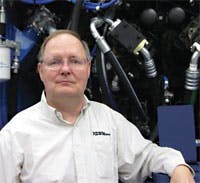editor
[email protected]
We often cover evolutionary changes in fluid power technology. Today’s hydraulic and pneumatic systems offer higher efficiency, greater performance, and more versatile and sophisticated control options than ever before. They are also quieter running, more compact, more reliable, and friendlier to our environment. Digital control is probably the mot revolutionary change we’ve seen in fluid power, but even digital electronics have been slow to find their way into fluid power systems. So most improvements didn’t come about through revolutionary advances in technology but resulted from incremental improvements occurring over decades.
I think attitudes toward women in engineering have undergone a similar evolution. As many sources indicate — such as the National Science Foundation and IEEE, the world’s largest professional association for the advancement of technology — women are still the minority in the engineering profession, but are gaining in management positions. I was reminded of this slow evolution recently in a phone conversation with a woman I have known about for decades and recently became acquainted with through LinkedIn. She earned a BS in engineering in 1967 from what is now Case Western Reserve University in Cleveland.
She interviewed for jobs in a technical field, and she felt many of the questions she was asked would not have come up if she had been a man. For example, one job (which she ended up accepting) would require travel to technical conferences and trade shows across the country. Questions arose about whether she would have a problem staying at a hotel where most of the patrons were men. She was even asked if her husband would have a problem with that. And what seems incredible now, the employer actually called her husband to ask him if he was okay with her accepting the job.
She held the job until about 1976, when one of her senior colleagues decided to step down from his management position to take on a more relaxed work schedule. She had worked her way up through the ranks and proven herself more than capable of taking over the management position. So she scheduled an interview with the executive in charge of the group and was told flat out that a woman would not hold the top management position of such a technical group — not during his watch, anyway. Realizing she had hit a glass ceiling, she wasted no time in finding employment elsewhere.
I’ve told this story to several people, who have all been astounded. I’m not suggesting this type of discrimination no longer happens, but I can’t imagine such blunt conversations occurring in today’s society. So even though women still have an uphill battle in gaining equality in the workplace, we can see evolutionary progress by looking back.


